Sustainable housing is one that makes efficient use of resources and energy with minimal impacts on the environment.
The overriding principle in sustainable housing is ensuring it promotes a better quality of life and involves less waste, better reliability, lower life-cycle environmental impacts, less maintenance, and more reuse. These are some of the ways that are used to make a home more sustainable.
Making our homes sustainable is a simple task and does not need to cause a lot of anxiety during or after construction. If a house is already constructed, there are many improvements that are needed to make it more sustainable. Some of them are immediate and cheap, while others take longer and are more costly. For new homes, there are so many ways it can be made sustainable.
Each one of us matters, has a role to play, and makes a difference. Each one of us must take responsibility for our own lives, and above all, show respect and love for living things around us, especially each other
~ Jane Goodall
35+ Innovative Ways to Build a Sustainable Living House
Most of these sustainability aspects are applicable when renovating or when constructing a new building. Here are 35+ innovative ways to build a sustainable house.
1. Insulation of Walls and The Floor and Having a Ceiling Board
Insulation will help to aid in cooling purposely to save on energy costs. Consequently, this saves money on energy bills and makes the house more comfortable by preventing heat from passing in and out of the house.
Insulating your house will maintain a comfortable temperature inside regardless of the outside temperature, allowing the temperature to remain balanced, whether in winter or summer. This means you won’t spend a lot of energy to heat your home come winter, and neither to cool it come summer.
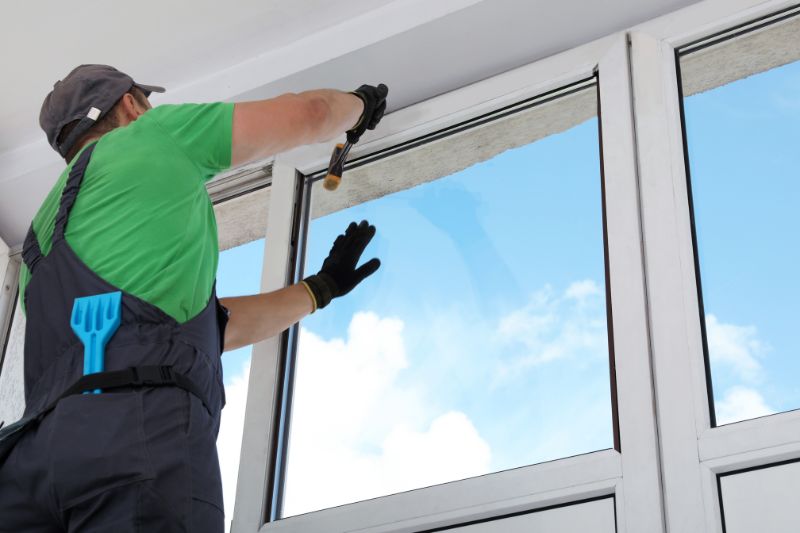
2. Install Double-Glazed Windows
Double-glazed windows help to insulate the house, making it cooler during the summer and warmer during the winter. But then, double-glazed windows can be a bit costly for some people, although they can still opt for thermal blackout curtains as an alternative.
3. Make Use of The Sun
Orientate a new home for maximum sunlight. This involves passive solar heating designs and making full use of daytime lighting. By the use of passive solar, the windows can let in energy, and the heat absorbed reduces the need for warming the house during cold periods such as winter. And of course, if you need professional insights on this, seeking advice from the architect is necessary.
4. Choose Appliances that Have More Energy-Efficiency
Swapping the regular electrical appliances with energy-saving certified products is highly desirable for a sustainable house. It will save you the amount you spend on energy and help conserve natural resources.
5. Selection of Non-Toxic Building Materials for Constructing the House
Are you planning to build? How about you consider using “Green” materials? They are non-toxic building materials with lower environmental impacts compared to other traditional materials.
6. The Use of Local Materials
Using locally available materials is appropriate to reduce the degradation of the environment during transportation.
7. Minimizing Resource Wastage
I know not many of us might be ready to accept the idea, but recycling waste can be done to reduce the accumulation of waste as much as possible. For instance, materials can be sourced from demolished products that have been recycled.
8. Usage of Renewable Electricity Sources
This is done through the installation of a small-scale wind turbine or micro-hydro system. Choosing a power company that generates renewable sources is also recommended.
9. Building the House with Comfort and Taking Care of The Future Will Make It More Sustainable
If the plan is to stay longer in the room, then indoor and outdoor access will be a requirement. These features are not only convenient but will also help avoid future extensions of the house as well as renovation to reduce future expenditures in the house.
10. Selection of Local or Native Plant Life for Landscaping and Interior Design Is an Essential Element
If you’re interested in making your house more sustainable, one thing you can’t afford to miss is including plants. Using plants in your house will make it look more beautiful, as well as create a calm environment for sustainability. Plants also act as natural air purifiers.
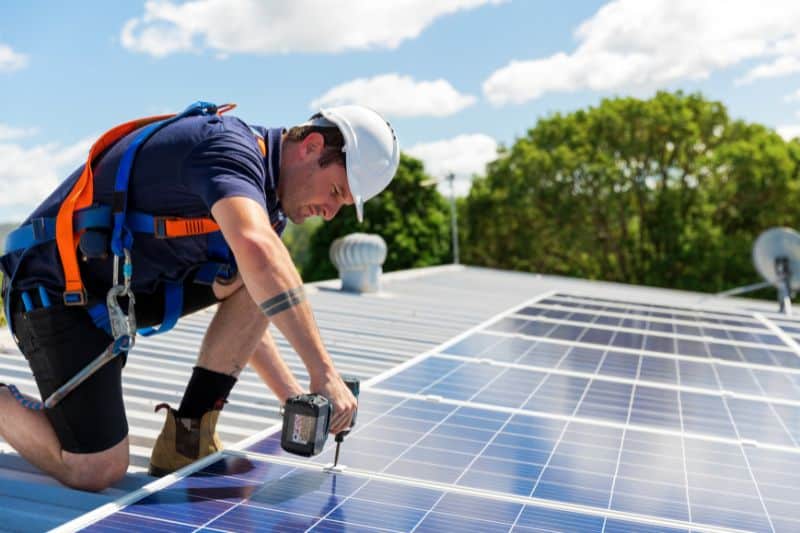
11. Installation of Solar Panels and Temperature-Regulating Walls
Installing temperature-controlling walls will make the house more eco-friendly and cooler. Solar panels, on the other hand, are a sound investment for sustainable home improvement and can greatly boost the home value should you consider selling it later.
12. Putting up Energy-Saving Bulbs in The House
If you’re still using the traditional bulbs, then don’t get surprised every time you receive your energy bills. Replacing your incandescent light bulbs with compact fluorescent lamps or LED bulbs is a clever way to save your pocket and embrace sustainability without compromising the quality of light output.
13. Usage of Extension Loads Types of Equipment
Are you using multi-socket extension loads in your house? If not, then this might be the best time to start doing it. Your house power consumption can be reduced by almost fifteen percent if multi-socket extension loads are used.
14. Building Compost for Kitchen Waste
What happens to your food waste? Put it in the garbage disposal? Or maybe you throw it into your trash bin alongside general trash?
Well, for sustainability purposes, you may need to embrace the idea of composting it. It will reduce the amount of household waste in landfills and cut down on the costs associated with the collection of waste.
15. Use of Organic Bedding
Cotton linen usage accounts for almost thirty percent of the world’s insecticide use. Changing to organic cotton or bamboo is more sustainable and efficient.
16. Use of Windows That Are Energy Efficient
Perhaps you weren’t thinking about it, but paying attention to your windows for proper improvements is another way to pursue sustainability. Using energy-efficient windows will keep the house cool during the summer and warm in the winter due to their proper insulation.
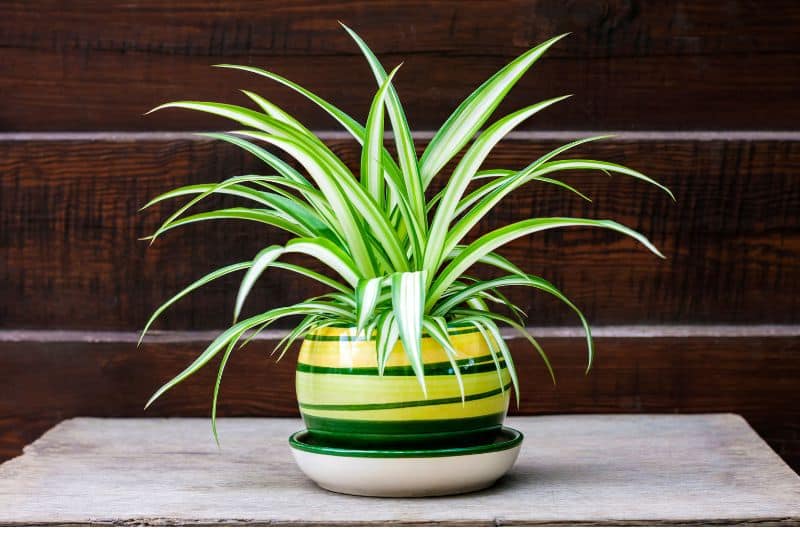
17. Planting of Spider Plants in The Room
You might be one of the many people who are afraid of the eight-legged arachnid. But we’re talking about the plant in this case, so no need to panic.
Spider plants are known for air purification, they are planted in the chamber, and they will help to purify the air, especially in the bathroom.
18. Creating a Comfortable Eco-House with A Passive Design
A house that has a passive design makes the room cool and heat up naturally. This will make the occupants feel comfortable due to its excellent orientation and proper ventilation. The house will also facilitate the sun’s rays during cold seasons and will be able to cool down during the hot season.
The house can also be designed to receive more natural light than artificial light, reducing the overall electricity costs.
19. Design to Create a Microclimate
The design should allow lightweight ventilation in a hot, dry climate. The house should also be well-insulated and have good solar access during winter.
20. Design for A Good Life
Ensure the house aims to stay for a longer period. The materials should be vigorous and durable, and they can be recycled easily. The house should also adapt to the changing needs without incurring the cost in the future by building extension or renovation.
21. Creation of Efficient Heating and Cooling Without Buying Air Conditioners in The House
It can be done by the use of curtains and blinds and sealing any leaks. Also, make use of the sun’s heat and shading to provide an excellent climate and insulation, respectively. If you have to buy an air conditioner, then you also have to set up ceiling fans to increase the efficiency of the air conditioner.
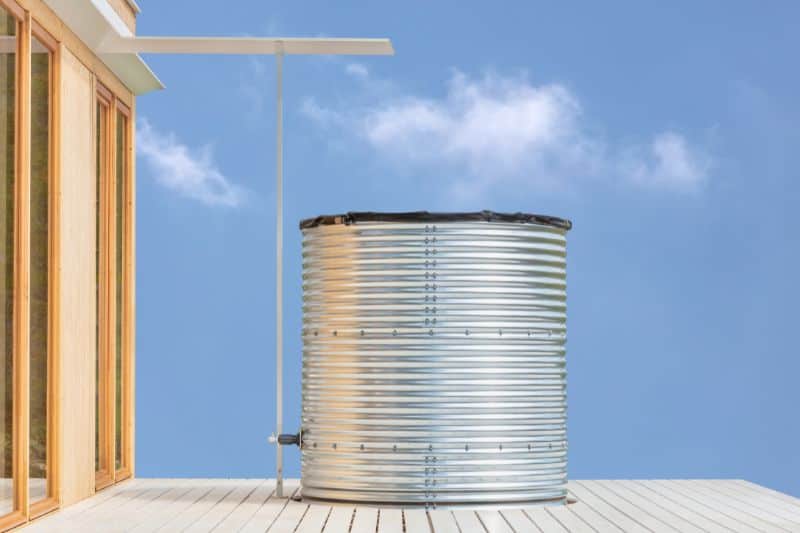
22. Build Water Tanks to Collect Rainwater
Collecting the rainwater in tanks for use in bathrooms and gardens is part of water use efficiency. Rainwater harvesting will help to reduce the wastage of piped water, thereby leading to sustainable living.
23. Use of Drought-Tolerant Plants for Landscaping the House Environment
Another way you can promote sustainability in your home is by opting for drought-tolerant plants. They require less water and can survive during drought, thus minimizing the amount of water you need to use on them. Of course, they also deliver the same aesthetic value as their counterparts.
24. Use Solar or Wind Power
The two are renewable energy sources that are cheap and non-polluting. If using wind energy plants for landscaping, it is necessary to use wind maps that can help to predict the mean annual wind speed in your location.
There are factors to be taken into consideration when using wind and solar energy. Once the system is set up, it will supply the house with clean and free electricity. Investigate renewable energy options from your energy supplier.
25. Establishing Lockable Taps
Turning off the taps after usage helps to avoid water wastage. Ensuring that the taps are turned off after using them avoids the misuse of water, and in the long-term, it contributes to saving on water bills hence increasing sustainability.
26. Installation of Programmable Thermostats
Still thinking about whether you actually need programmable thermostats? Well, if you’re thinking about creating a more sustainable home, then you definitely do!
Thermostats can be used to monitor the house temperature, keeping it warmer or cooler as necessary without your manual input.
27. Install Low-Flush Toilets
Low-flush toilets can significantly help to reduce water wastage compared to traditional ones that use 6 liters of water per flush. Particularly, low-flush toilets use about 4.5 liters or less per flush. That’s 25% less amount of water!!
28. Reuse of The Furniture
Other than purchasing new furniture, one can recycle the old ones. Doing this will save money and trees.
29. The Use of Eco Paints for The Walls During Construction Will Make the House More Sustainable
The use of paints that are plant or water-based other than the traditional ones which are full of volatile organic compounds is part of building a sustainable house. The chemical paints are bad for the occupant’s health and lead to air pollution.
30. Installation of Motion Sensing Lights in The Room
Motion-sensing lights will help in turning on the lights when a person or people are occupying a room and turn them off when there is no one. This contributes to saving energy costs often associated with wastage when people forget to turn off the lights when leaving the house.
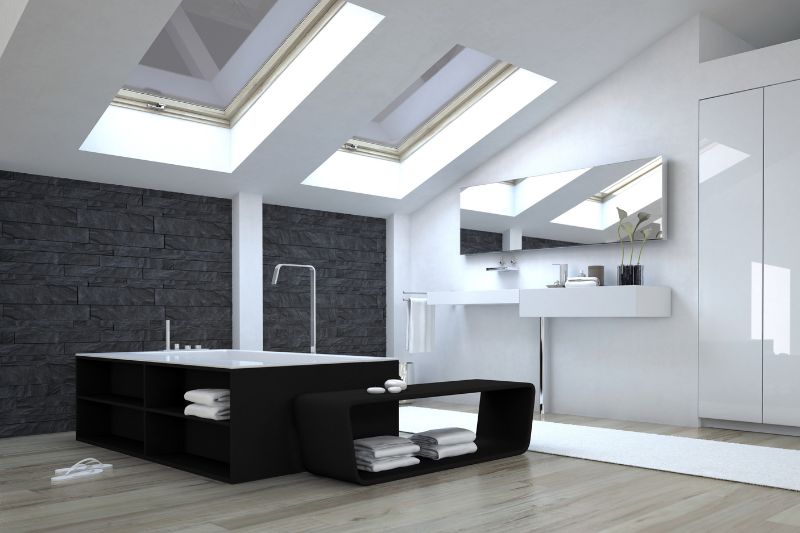
31. Installation of Skylights in The Room
Skylights not only provide beautiful lighting but are also energy-saving, thereby reducing energy consumption.
32. Use of Sustainable Flooring Materials
Perhaps you love artificial materials for your flooring. But how about opting for sustainable ones like bamboo?
Well, these materials will make the floor appear attractive and durable. Plus, bamboo grows very fast and requires small areas, meaning the natural replenishment can easily match the demand rate.
33. Install a Drip Irrigation System
Keeping the yard healthy and green isn’t just about looks; it keeps the home cooler, serves as a windbreak, and contributes to cleaner air. If you need to keep your yard watered, drip irrigation is a better alternative.
Drip irrigation systems use gravity to deliver water to plants, focusing it directly on the roots where it’s needed. It not only saves electricity by eliminating pumps but also minimizes waste through evaporation.
34. Install a Cool Roof
Another way to embrace sustainability is to have a cool roof installed. A cool roof reflects the sun’s heat instead of absorbing it into your home, and the effect on your cooling bill can be tremendous.
35. Install a Water Filter that Removes Microplastics
Add a filter to your washing machine to ensure that you aren’t adding microplastics to the environment. You can also use a filter for your tap water coming into your home to keep microplastics out of your drinking water.
36. Energy-Efficient Exterior Doors and Draft-Proof Doors and Windows
You may find door jamb draft stoppers cute, but they probably aren’t doing enough, and your conditioned air may be finding its way out along all the edges of your exterior doors. That also means the heat is escaping in the winter. Your AC might also be working overtime in the summer. Replacing leaky weatherstripping and using foam tape to cover cracks can eliminate gaps that cost you in terms of heat and air conditioning.
Energy-efficient new doors have a variety of styles to choose from like multi-paned glass. These options fit tighter to the frame and are made from improved materials, and today’s efficient options also include patio doors.
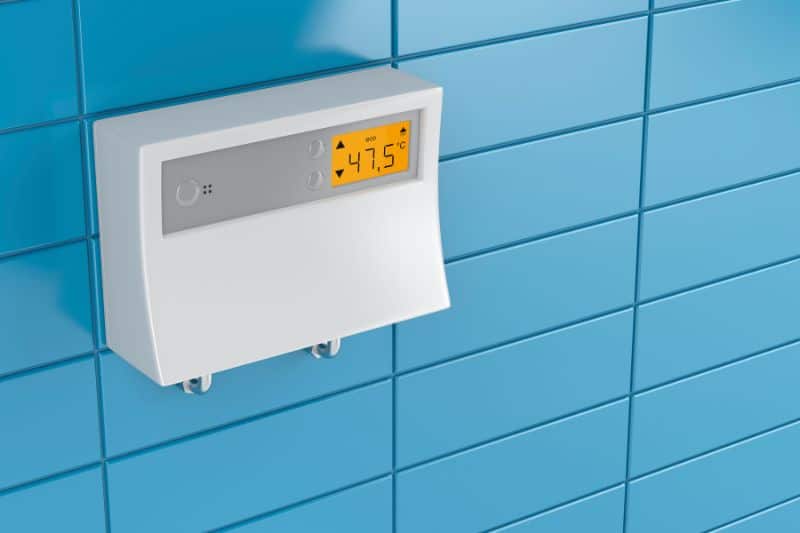
37. Tankless Water Heaters
A water heater that sits in the corner of the garage or basement gives you hot water when you want it. But it’s constantly using energy. The water heater cycles on and off to maintain the temperature set. Hence an electric one can be a costly process over time.
Consider a tankless or on-demand water heater. These high-efficiency heaters don’t heat the water until you ask for it. However, there are a few things to consider before switching to tankless. You can choose an efficient water heater as per Consumer Reports which has a complete guide to suit your needs.
38. Non-Toxic Carpet
Carpet is also an energy efficiency measure. In addition, it makes your toes comfy and reduces noise. Carpet can also help maintain air temp: warmer in the winter, cooler in the summer. If you’re considering new flooring, check into non-toxic carpet options.
The normal carpets release VOCs (volatile organic compounds) from the latex that binds the carpet fibers to the backing. It can take weeks for the fumes to go away, and till then, your family will be breathing them in. If the carpet is on your sustainable home improvement list, it will leave a good impact on your lungs by going eco-friendly!
39. The HVAC System
Selecting an efficient heating, ventilation, and air conditioning (HVAC) system is also an integral part of building a sustainable home. As an Energy Star-rated technologically advanced system, it remains a sophisticated comfort zone.
The proper selection and maintenance of HVAC equipment can save energy, reduce carbon emissions, conserve water, save money, and save the environment. Central AC and heat systems are costly to replace. Always keep them in top shape with annual maintenance.
40. Talk to Sustainability Experts
Sustainability is an area of fast innovation in home building, home systems, appliances, and lighting. Sustainability experts can perform an energy audit to give you advice on easy fixes, the latest technology, and other efficiency improvements first.
References:






